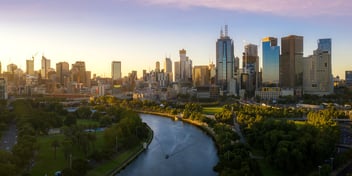Yarra River environmental health in “poor but stable” condition
Pollution, litter and invasive species are among the factors threatening the environmental health of the Yarra River, a new report card on the waterway has found.
The State of the Yarra and its Parklands 2018 report, which was released last month, assessed the health of the river using 36 indicators, from pollution and sewerage to streamflow, water quality and climate change.
Of the indicators, only one – post-settlement colonial heritage – was assessed as ‘good’, while 18 were labelled ‘poor’. This includes 16 of 25 environmental health indicators.
Report lead author and senior science writer at the Office of the Commissioner for Environmental Sustainability Dr Rebecca Koss said the report revealed the Yarra was in a “poor but stable” condition.
“This condition is due to factors such as Melbourne’s population growth, stormwater, sewerage and decreasing rainfall due to climate change,” Koss said.
System under stress
The report said the river system is “under considerable stress, mostly in the lower urbanised catchment”.
“The Yarra River corridor is exposed to many threats and pressures, including: inappropriate land development along the river bank, invasive pest plants and animals, litter, pollution (including sewerage), stormwater, climate change and population growth,” the report states.
Although there seemed to be a downward trend in the amount of litter in the Yarra between 2009 and 2015, this began increasing from 2016. Over 179 tonnes of litter (including 1.29 million cigarette butts) was collected from the river and out to Port Phillip Bay between 2014 and 2017.
Meanwhile, the Victorian Environment Protection Authority received 338 water pollution reports across the Yarra from 2013 to 2017. This ranged from fish deaths to industrial pollution, residential construction and sewer overflow.
What should be done?
The report provided seven recommendations that Koss said would help strengthen the river’s resilience.
“Extending the current interim Yarra River Protection Planning Controls from Warrandyte to the Yarra Ranges National Park, in combination with creating connected habitat corridors, will protect critical ecosystems, such as billabongs and floodplains, and our native animals and plants during periods of environmental stress such as drought or floods,” she said.
Other recommendations include collecting more detailed and accurate climate and rainfall projections to improve water management outcomes, and employing a chief biodiversity scientist at the Department of Environment, Land, Water and Planning (DELWP) to improve the impact of investment in biodiversity research.
Cultural connection
With the status of nine indicators unknown due to a lack of data, Victorian Commissioner for Environmental Sustainability Dr Gillian Sparkes said it is important to expand the scope of information gathering.
“Cultural, social and economic indicators are included in this inaugural report, but the data is generally poor or missing entirely,” she wrote.
“There is an opportunity here to strengthen monitoring and data collation along the Yarra to include [these] indicators.”
The report said the Victorian Government should work to enhance the role of traditional owners in cultural landscape health and management, and recognise Aboriginal cultural heritage as a fundamental part of Aboriginal community life and cultural identity.
Koss said the impact of cultural factors on the health of the river should not be overlooked.
“In addition to the strong scientific evidence base, this report provides a narrative that links environmental conditions to cultural, social and economic aspirations for a healthy and flowing Yarra River,” she said.
“That is the end game: protecting this precious natural asset.”
The report was based on data from 13 organisations, including: Melbourne Water; the Victorian Aboriginal Heritage Council; Aboriginal Victoria; the DELWP; Parks Victoria; and the Victorian Environmental Water Holder.
Read the report here.

